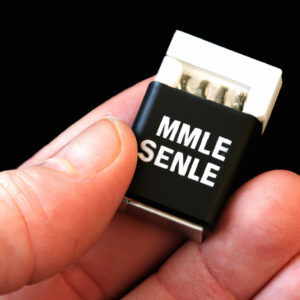5 Steps to Mastering the Art of Deleting PowerShell Variables
In a world where control and customization are key elements in the realm of software engineering, the PowerShell command line continues to captivate and empower professionals seeking a refined and user-friendly scripting language. This article will delve into the process of deleting PowerShell variables, addressing the most pressing concern for those eager to learn the ropes of this powerful platform. Let’s embark on an enlightening journey to explore the depths of efficiently managing your PowerShell environment by mastering the art of variable deletion.
Step 1: Understanding PowerShell Variables and Their Significance
Before diving into the process of deleting PowerShell variables, it is imperative to comprehend just what these variables entail and their importance in the grand scheme of things. In the PowerShell universe, a variable is nothing more than a storage unit that can retain diverse types of data and values. Managing these variables with precision can streamline your scripts, improve performance, and enhance the overall cleanliness of your code.
Step 2: Identifying the Variables You Wish to Delete
PowerShell offers an array of commands that can assist you in identifying the existing variables within your system. To view a list of all accessible variables, simply type the following command in the PowerShell console:
“`powershell
Get-Variable
“`
This command will generate an output listing every single variable present in your session. From here, you can discern which ones require deletion, paving the way for optimal management and organization.
Step 3: The Quintessential Deletion Process
With your target variables identified, it is time to proceed with the actual deletion process. To eliminate a specific variable from your session, you must utilize the `Remove-Variable` cmdlet, followed by the variable’s name. Below is an example of this command in action:
“`powershell
Remove-Variable -Name myVariable
“`
Here, “myVariable” stands as the placeholder for the variable you intend to delete. Replace it with the name of your target variable, and watch as it vanishes from your session.
Step 4: Delving into Scope Management
Now that you have a firm grasp on the basic process of deleting variables, it is crucial to delve into the concept of scope management. In PowerShell, there exist various scopes within which variables can reside. These range from the global scope (accessible throughout the entire session) to local and script-specific scopes. By default, the `Remove-Variable` cmdlet targets variables within the local scope. To broaden your deletion capabilities, the `-Scope` parameter can be employed:
“`powershell
Remove-Variable -Name myVariable -Scope Global
“`
The command above will effectively remove “myVariable” from the global scope, granting you further control over your variable management endeavors.
Step 5: Employing Wildcards and Advanced Deletion Techniques
For those who seek greater flexibility and efficiency in the variable deletion realm, PowerShell accommodates advanced techniques. One such method involves utilizing wildcards to expedite the process. For example:
“`powershell
Remove-Variable -Name *temp* -Force
“`
In this instance, the asterisks function as wildcards, directing PowerShell to delete any variable containing the term “temp” in its name. Additionally, the `-Force` parameter can be used to bypass confirmation prompts and exceptions, ensuring that the deletion is swift and seamless.
Conclusion: The Power of Mastery
By following these five comprehensive steps, you are well on your way to mastering the art of deleting PowerShell variables. As you continue to develop your proficiency, always remember the significance of prudent scope management and advanced deletion techniques, as they will undoubtedly enhance your overall experience and capability within the PowerShell platform. With this newfound knowledge, you can now harness the power of organized scripting and an optimized workflow, granting you the ability to effectively conquer any challenge you may encounter in the world of software engineering.
What is the most efficient way to delete a PowerShell variable from the memory in command-line?
The most efficient way to delete a PowerShell variable from the memory in the command-line is by using the `Remove-Variable` cmdlet. You can also use the `Clear-Variable` cmdlet or set the variable to `$null`, but the `Remove-Variable` method is generally recommended.
Here’s an example of how to use the `Remove-Variable` cmdlet:
“`powershell
Remove-Variable -Name myVariable
“`
In this example, replace `myVariable` with the name of the variable you want to delete.
How can I use the ‘Remove-Variable’ cmdlet to delete a specific variable in PowerShell command-line?
In PowerShell command-line, you can use the `Remove-Variable` cmdlet to delete a specific variable. To do this, simply pass the variable name as a parameter to the `Remove-Variable` cmdlet. Here’s an example:
“`powershell
$MyVariable = “Hello, World!”
Remove-Variable -Name MyVariable
“`
In this example, we first create a variable called `$MyVariable` and then delete it using the `Remove-Variable` cmdlet. Note that you don’t need to use the `$` symbol when specifying the variable name with `-Name`.
Are there any alternative methods to delete a PowerShell variable other than using ‘Remove-Variable’ in the command-line environment?
Yes, there are alternative methods to delete a PowerShell variable besides using Remove-Variable. You can use the Clear-Variable command or set the variable to $null. Here’s how to use them:
1. Clear-Variable: This command sets the value of the variable to its default value based on the type of the variable. If the variable is not strongly typed, its value is set to $null.
“`powershell
Clear-Variable -Name VariableName
“`
2. Set the variable to $null: Assigning a $null value to a variable effectively deletes it.
“`powershell
$VariableName = $null
“`
Keep in mind that while these methods are alternatives to Remove-Variable, they do not remove the variable itself but only clear or nullify its value. The variable will still exist in the scope but with no assigned value.

